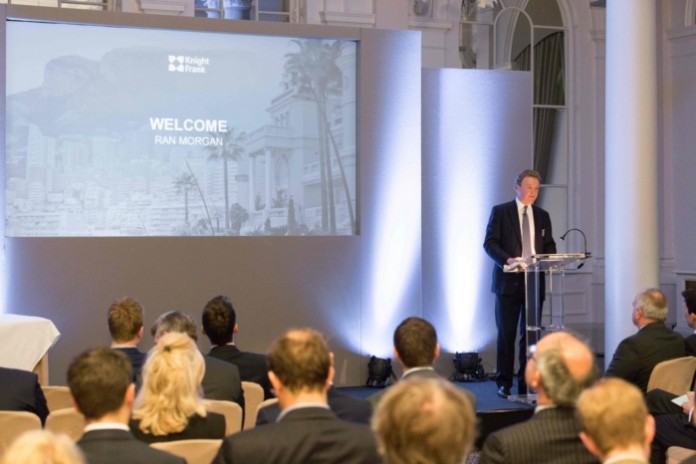Private foreign buyers are showing record appetite for Scotland’s most expensive residential and commercial properties, according to new analysis from Knight Frank.
Launching its annual Wealth Report at an event in Edinburgh on Friday (May 6 2016), Knight Frank said there were deals worth more than half a billion pounds (£574.12 million) for large*, Scottish commercial property assets purchased by international investors during the 13-month period up till the end of January 2016.
Private overseas clients were involved in a number of notable deals, including the near-£100 million transaction for Edinburgh’s Standard Life House and the record-breaking £105.5 million purchase of the capital’s Port Hamilton – the well-known home of pension house Scottish Widows.
There were also substantial investments from private individuals into commercial property in Glasgow and Aberdeen, with the £14.1 million off-market acquisition of the Ca’d’oro building by Glasgow Central station and the £23.5 million deal for the Granite City’s KCA building.
Alasdair Steele, Head of Scotland Commercial at Knight Frank, said: “We’re seeing wholesale changes in the types of buyer interested in the Scottish market. Historically, UK funds have been the most frequent purchasers of Scottish commercial property, but we’re increasingly seeing private overseas money coming into Scotland – almost every deal sees interest from a new entrant.
“Edinburgh and Glasgow offices are currently commanding prime yields of 5.25% and 5.50% respectively, a relative discount compared to the other big six regional centres, along with London and the South East. We anticipate the appetite among private international buyers will remain strong and they will continue to be a core part of the market for the remainder of 2016 and beyond.”
International buyers also snapped up half of Scotland’s 16 rural estates sold in 2015/2016 – the total value of these transactions reached £57.5 million. Overall, 11% of Knight Frank’s residential buyers in Edinburgh during the 12-month period were from abroad, spending on average 50% more than domestic purchasers.
Among the new owners of Scottish estates in 2015/2016 were wealthy individuals and families from Qatar, the USA, Chile and various European countries. One of the most noteworthy deals of the year was the sale of Kinnaird Estate, Perthshire, with a guide price of £10 million.
Ran Morgan, Head of Scotland Residential at Knight Frank, said: “Residential property in Scotland has global appeal and looks exceptionally good value – the appetite from high-net-worth individuals has been robust. In Scotland, we have a competitive advantage over the rest of the UK for investors in residential assets thanks to the Land and Building Transaction Tax (LBTT) relief on the additional 3% for the purchase of six or more units.
“Edinburgh is a particularly attractive option for overseas investors looking at the UK. Many now find London property overheated, while its capital city status and global standing as a cultural and tourist destination further add to its appeal. High quality education is a specific draw for buyers from Asia and Russia, and increased air connectivity from new routes to America and Middle Eastern hubs have aided its attraction to these markets.”
Knight Frank’s Wealth Report found that ultra-high-net-worth individuals (UHNWIs) – people with $30 million or more in net assets – now account for 25% of global commercial property investment, with $902 billion invested since 2009. In 2015, they invested a total of $178 billion in commercial property, including $52 billion in Europe and $16 billion in the UK alone – three times more than seen in France and a third more than in Germany.
The number of UHNWIs declined by 3% last year. There are now around 187,500 UHNWIs around the world, down from 193,100 in 2014. However this still marks a 61% rise from a global UHNWI population of 116,800 in 2005. While the global population of UHNWIs is set to rise by 41% to 263,500 by 2025, Knight Frank said that growth is set to be significantly slower than the previous 10 years.



















